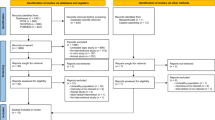Abstract
In this study we determined the possible effects of age, sex, and race on selenium (Se) concentration in plasma and erythrocytes and on glutathione peroxidase (GSH-Px) activity in erythrocytes. Two hundred six healthy blacks, whites, males, and females ranging in age from 11 to 60 yr were studied. For the entire population, mean±SDM Se concentrations were 0.104±0.021 μg/mL for plasma and 0.158±0.035 μg/mL for erythrocytes. Mean concentration of Se in plasma was higher in white subjects compared to black subjects (P<0.02). This difference was due exclusively to higher values in young adult white males (age, race, sex interaction). Neither plasma nor erythrocyte Se concentration nor erythrocyte GSH-Px activity were otherwise affected by age. In all groups plasma Se was correlated with erythrocyte Se (P<0.001), but not with glutathione peroxidase. Erythrocyte Se also was correlated inversely with years of smoking (P<0.033) and coffee intake (p<0.01). These results have defined the Se status in this healthy population in Augusta, Georgia as below the reported US mean. The factors underlying the age, race, sex interaction and the health significance of the low Se status in this population should be investigated.
Similar content being viewed by others
References
T. C. Stadtman,Trends Biochem. Sci. 2, 203 (1980).
J. Pinset,Biochem. J. 57, 10 (1977).
D. C. Turner and T. C. Stadtman,Arch. Biochem Biophys. 154, 366 (1973).
J. T. Rotruck, A. L. Pope, H. E. Ganther, D. G. Hafeman, and W. G. Hoekstra,Science 179, 588 (1973).
P. D. Whanger, N. D. Petersen, and P. H. Weswig,Biochem. Biophys. Res. Comm. 53, 1031 (1973).
K. P. McConnell, R. M. Burton, T. Kute, and P. J. Higgins,Biochim. Biophy. Acta 588, 113 (1979).
R. F. Burk, inPresent Knowledge in Nutrition, 4th ed., D. M. Hegsted, et al., eds., Nutrition Foundation, New York, 1976, pp. 310–316.
K. Schwarz,Med. Clinics No. Amer. 60, 745 (1976).
W. J. Hartley and A. B. Grant,Fed. Proc. 20, 679 (1961).
K. Schwarz and K. Pathak,Chemica Scripta 8A, 85 (1975).
J. R. Schubert, O. H. Muth, J. E. Oldfield, and L. F. Remmert,Fed. Proc. 20, 689 (1961).
Keshan Disease Research Group,Chinese Med. J. 93, 477 (1979).
E. J. Underwood, inTrace Elements in Human and Animal Nutrition, 4th ed., Academic Press, New York, 1977.
A. M. Van Rij, C. D. Thomson, J. M. McKenzie, and M. F. Robinson,Am. J. Clin. Nutr. 32, 2076 (1979).
C. R. Fleming, T. T. Lie, J. T. McCall, et al.,Gastroenterol. 83, 689 (1982).
R. A. Johnson, S. S. Baker, J. T. Fallon, et al.,New Eng. J. Med. 304, 1210 (1981).
P. J. Collipp and S. Y. Chen,New Engl. J. Med. 304, 1304 (1981).
C. D. Thomson and M. F. Robinson,Am. J. Clin. Nutr. 33, 303 (1980).
C. D. Thomson,Proc. Univ. Otago Med. Sch. 50, 31 (1972).
K. Kasperek, G. V. Iyengar, J. Kiem, H. Borberg, and L. E. Feinendegen,Clin. Chem. 25, 711 (1979).
D. E. Paglia and W. N. Valentine,J. Lab. Clin. Med. 70, 158 (1967).
P. A. Whetter and D. E. Ullrey,J. Assoc. Off. Anal. Chem. 61, 927 (1978).
D. K. Smith, J. C. Smith, Jr., M. F. Brennan, and J. A. Halsted, inMineral, Acid-Base and Water Metabolism, J. C. M. Chan and J. Gill, eds., Wiley, New York (in press).
W. H. Allaway, J. Kubota, F. Losee, and M. Roth,Arch. Environ. Health 16, 342–348 (1968).
O. E. Olson, E. J. Novacek, E. I. Whitehad, and I. S. Palmer,Phytochemistry 9, 1181 (1970).
C. D. Thomson, H. M. Reas, V. M. Doesburg, and M. F. Robinson,Brit. J. Nutr. 37, 457 (1977).
R. J. Shamberger, A. T. Stanley, and C. E. Willis, inTrace Substances in Environmental Health, D. D. Hemphill, ed., University of Missouri Press, Columbia, Missouri, 1975, pp. 15–22.
J. T. Salonen, G. Alfthan, J. Pikkarainen, J. H. Huttunnen, and P. Puska,Lancet 2, 175 (1982).
Author information
Authors and Affiliations
Rights and permissions
About this article
Cite this article
McAdam, P.A., Smith, D.K., Feldman, E.B. et al. Effect of age, sex, and race on selenium status of healthy residents of Augusta, Georgia. Biol Trace Elem Res 6, 3–9 (1984). https://doi.org/10.1007/BF02918316
Accepted:
Issue Date:
DOI: https://doi.org/10.1007/BF02918316
Index Entries
- Plasma selenium concentration
- RBC selenium concentration
- RBC glutathione peroxidase activity
- age, effect on Se status
- sex, effect on Se status
- race, effect on Se status
- male, effect on Se status
- female, effect on Se status
- blacks, Se status in
- whites, Se status in
- selenium status, effects of age, sex, and race on




